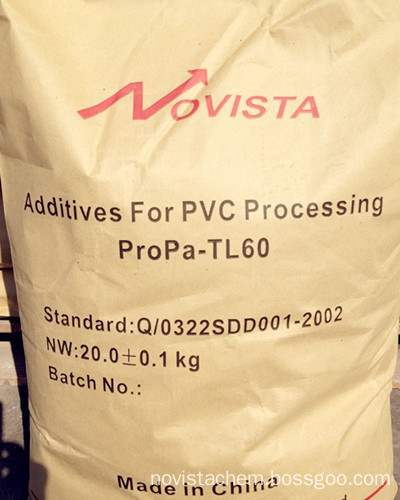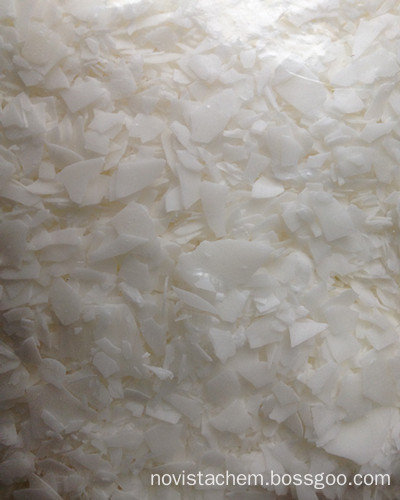This paper introduces the variable frequency speed regulation constant pressure water supply system composed of AI artificial intelligence regulator and PLC, and expounds the realization scheme and circuit principle of the system. Due to the self-learning fuzzy control algorithm of AI instrument, the system has the advantages of simple structure, stable operation and high performance index.
Lubricants are divided into two areas, internal and external lubricants. The transition between external and internal lubricating effect is fluid, however, – internal lubricants often also have a certain external lubrication effect and vice versa. Lubricants having both effects are therefore called [combined lubricants".
introduction
Constant pressure water supply has been widely used in industrial and civil water supply systems. Due to the uncertainty of system load changes, it is difficult to achieve the desired effect by using the traditional PID algorithm to realize the dynamic characteristics of pressure control. In the early stage of the design of constant pressure water supply automation control system, a variety of imported regulators were used. The dynamic characteristics of the system are always unstable. Through the comparison in practical application, the control scheme formed by applying fuzzy control theory is used in the constant pressure system. Have a good effect. In the implementation process, the AI-808 artificial intelligence regulator was selected as the main controller, and the NX1N PLC logic control function was used to realize the fully automatic constant pressure water supply of the water plant. For the implementation of pressure and logic control scheme by PLC alone, it is difficult to write a perfect fuzzy control algorithm due to insufficient computing power of PLC, and the adjustment of parameters is also troublesome, so the proposed scheme has high cost performance.
Working principle The system is mainly composed of AI-808 artificial intelligence regulator, frequency converter, control contactor group, water pump, valve, pressure transmitter and so on. Due to the large power of the pump, in order to save costs, only one inverter is used, and two of the three pumps can be frequency-controlled, so that one inverter can be switched to another inverter for maintenance or maintenance. Figure 1 is a block diagram of the water supply system.
The pressure sensor detects the water main pipe pressure and sends it to the AI-808 meter through the transmitter. The pressure error and the error change rate are obtained by comparing with the set value. After the AI-808 unique fuzzy and PID control algorithm is combined, the output will be output. The control signal (4~20mA) is sent to the control terminal of the inverter. By adjusting the frequency, the outlet pipe pressure reaches the required index. When the user and water volume increase, the water supply pressure requirement can not be met when the frequency converter reaches 50Hz, the PLC will detect the low pressure signal of the AI-808 regulator, and according to its logic and process requirements, add another pump to run the power frequency. Similarly, after the user's water consumption drops, the PLC will take out one of the power frequency water pumps and exit the operation after receiving the high water pressure signal of the AI-808 regulator.
When the system is running, the inverter is a fixed control of one pump, and no method of switching between multiple pumps is implemented. This can avoid frequent switching to the system and the inverter, and has high reliability. At the same time, considering the flexibility and maintenance, the system can manually select one of the two pumps for variable frequency operation, and can also reduce the loss caused by long-term low-frequency operation of a certain pump.
Control algorithm The PID controller commonly used in industrial processes is suitable for linear steady-state systems. The objects of the water supply system often contain nonlinear and time-varying links, and some parameters are slowly changed. Therefore, it is difficult to achieve ideal control effects by PID control alone. The AI ​​artificial intelligence regulator adopts a dual-mode control algorithm combining fuzzy control and improved PID, as shown in Figure 2.
When the control starts, the error e=Ys is large, that is, when the deviation | e | ≥ EM (EM is the boundary value of the dual-mode control algorithm e), the system adopts the fuzzy control algorithm and has better dynamic performance. After the error is gradually reduced, that is, the deviation | e | is quantized and blurred by the error e and the error rate c, the fuzzy control rule with the correction factor is used:
P=[αe+(1+α)c]
Where: P is the integer quantized value of the control quantity U; α is the correction factor, the number between 0, 1.
Changing the value of α can change the fuzzy control rules of the dual-mode algorithm, thereby changing the dynamic quality of the system. The AI ​​regulator has self-learning and self-adjusting functions during the adjustment process.
The improved PID algorithm uses anti-integral saturation and incomplete differentiation. The form of the transmission is: When the improved PID control algorithm is adopted, the integral saturation phenomenon is eliminated, and the static performance of the system is optimized.
In the formula: KD is the differential gain. Under the step action, the ratio of the initial value of the PD output to the final value; the effect of limiting the differential mutation is too strong, and the value of KD should not be too large, generally 5-10.
During the commissioning process, the control system adjustment process is shown in Figure 3 when the set value changes. The adjustment process is shown in Figure 4 when the load is reflected by adjusting the valve.
Equipment selection and function AI-808 artificial intelligence industrial regulator
The AI-808 artificial intelligence regulator has advanced control algorithms for fuzzy logic PID adjustment and parameter self-tuning. When the error is large, the fuzzy method is used to adjust to eliminate the PID saturation integral phenomenon; when the error is reduced, the improved PID algorithm is used for adjustment, and some features of the controlled object can be automatically learned and memorized in the adjustment to make the effect optimize. It has the characteristics of no overshoot, high precision, simple parameter determination, and good control effect on complex objects. Its overall adjustment effect is more obvious than the general PID algorithm. This point was verified in the system debugging. At first, the pure PID regulator produced in Japan was used. In the process of water consumption change and pump retreat, the overshoot and stabilization time were not ideal. After switching to the AI-808 smart meter, Its dynamic and static indicators meet the requirements.
Programmable Controllers
The FX1N series programmable controller is selected and the output is relay type. Since the PLC only completes the logic function such as automatic pump switching, the analog input and output module is not needed, which saves investment. The closed-loop pressure control of the system is completed by the AI-808 artificial intelligence meter. The superiority of the algorithm is much higher than that of the PLC. Simple PID algorithm.
Frequency converter
Emerson TD2000-4T2000P inverter is used for pump type load. The frequency can be controlled by a manual potentiometer or a current signal output from the AI-808 regulator. The switching of these two modes is realized by the console manual/automatic switch. Define the inverter multi-function terminal as the potentiometer-current signal control mode.
Console
The system console design takes care of both manual and automatic modes of operation. In the manual state, each pump and valve can be individually turned on/off. The frequency of the inverter can be manually adjusted by a multi-turn potentiometer. In the automatic mode, the pump to be put into operation is determined by the selector switch, so that the pump can be repaired. At that time, you can let it exit the autorun queue without affecting the normal operation of the system. In addition to the PLC and AI-808 regulators, the console also has a water level display, a pressure indicator, and a frequency meter.
parameter settings
The AI-808 regulator provides a rich user setting method that allows it to achieve satisfactory control over different controls. The parameter setting determines the static and dynamic performance of the system. The parameters of the system are set as follows: given value: 0.43~0.47Mpa
HIAL: High limit alarm, no.
LOAL: Low limit alarm, no.
dHAL: positive deviation alarm, the system is used to control the switching of the water pump, Dhal=0.05
dLAL: Negative deviation alarm, the system is used to control the switching of the water pump, dLAL=0.05.
Df: hysteresis (dead zone, hysteresis), used to avoid frequent adjustment due to fluctuations in measured input values. In the range of hysteresis, the position adjustment does not work, Df=0.05.
Ctrl: Control mode, using AI artificial intelligence adjustment / PID adjustment, Ctrl = 1.
M5: Maintain parameters, mainly determine the integral action in the adjustment algorithm, similar to the PID integration time. The smaller the M5, the stronger the system integral action. When M5=0, the integral and AI artificial intelligence adjustment are canceled and become the PD regulator. The system value is 25.
P: The rate parameter is proportional to the change in the measured value when the meter output changes by 100% per second. P=1000/the measured unit value per second (the system is defined as one unit by 0.1), P=5 .
T: lag time, the smaller t is, the proportional and integral effects are proportionally enhanced, while the differential action is relatively weak, but the overall feedback effect is enhanced: conversely, the larger t is, the proportional and integral effects are weakened, and the differential action is relatively enhanced. , t=4.
Ctl: Output cycle, reflecting the speed of meter operation adjustment, Ctl=2.
Sn: Input feedback signal type, Sn=33, and the signal is 1~5V.
Conclusion
The system adopts AI-808 artificial intelligence regulator and FX1N PLC combined frequency conversion speed regulation constant pressure water supply scheme has been running in the field for many years, the situation shows:
(1) Using AI artificial intelligence regulator, using fuzzy control and PID combined control scheme, the advantages of two kinds of controllers are exerted, and better dynamic and steady state indicators are achieved, and the system pressure adjustment has fast recovery time and overshoot. Small and other advantages. The self-tuning function provides users with a convenient and quick parameter setting method, and the system stability error is ±0.01Mpa.
(2) The motor power is 180kW, and the single-frequency conversion mode is beneficial to reduce the system cost.
(3) The variable frequency speed control system makes the pump motor run under soft start, has no inrush current, long service life, and has good energy saving effect.
Http://news.chinawj.com.cn Editor: (Hardware Business Network Information Center) http://news.chinawj.com.cn
Internal lubricants reduce the frictional forces occurring between the PVC molecule chains, thus reducing melt viscosity. They are polar and thus are highly compatible with PVC. They help achieve excellent transparency even at high dosages and do not tend to exudate, which helps optimizing welding, gluing, and printing properties of the final product.
External lubricants reduce the adhesion between PVC and metal surfaces. They are mostly non-polar such as paraffin and polyethylene waxes. The external lubrication effect is largely determined by the length of the hydrocarbon chain, its branching and its functional group. At high dosages they can lead to cloudiness and exudation


Lubricant for PVC, External Lubricant for PVC, PVC Internal Lubricant, PVC External Lubricant
Shandong Novista Chemicals Co.,Ltd (Novista Group) , https://www.novistachem.com